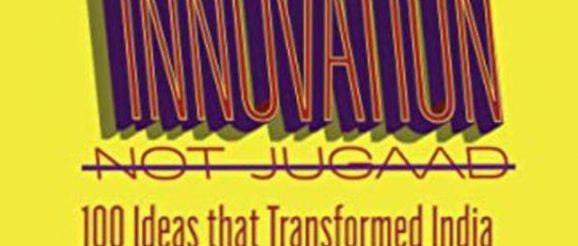Indian innovation, not jugaad – 100 ideas that transformed India – The Hindu BusinessLine

If there is one book that I would recommend every young Indian should read, that would be Indian Innovation, Not Jugaad; 100 Ideas That Transformed India by Dinesh C. Sharma. I have not come across another book which captures so well the contributions made by many, some famous and many unsung heroes, in significantly shaping the country we are today.
As the author points out, when India finally obtained Independence from colonial rule in 1947, the country was steeped in poverty, backwardness, illiteracy, ill health, irrationality, superstitions, inequality and injustice. We still have to deal with many issues in this list, but consider this: India today is self-sufficient in food as against depending on doles from other nations in 1947; is the largest producer of milk in the world; our life expectancy grew from 31 in 1947 to 70 in 2022; is a key global player in Information Technology and so on …. This came about due to contributions from many scientists, engineers, industrialists, political leaders and planners.
Let me share a few examples:
In 1942-43, about four years before we obtained Independence, one of worst famines hit us and we lost 4.3 million lives. We did not have enough food grain cultivation to feed our population of 300 million at that time. Today, we are not only self-sufficient in food production to feed a population more than four times that, but also export food grains. This was made possible due to dramatic developments in the early ’60s, often referred to as the Green Revolution.
The foresight of then Prime Minister, Lal Bahadur Shastri, to appoint C. Subramaniam as the Food and Agriculture Minister, and his resourcefulness to back scientists such as MS Swaminathan, BP Pal and DS Athwal and the fortitude shown by these scientists to bring to our country modern high yielding varieties of wheat and rice along with high input agriculture, saved our country. How many youngsters know the details of these dramatic developments which literally saved millions from hunger and death?
The great saviour
Oral Rehydration Therapy, which saves millions of infants from the clutches of death every year, not just in India, but across the globe, is a treatment for diarrhoea that was developed as an easy-to-use treatment procedure by an Indian doctor, Dilip Mahalanabis who was working to prevent and treat dehydration among refugees of the Bangladesh war in 1971. The procedure involves giving children affected by diarrhoea oral rehydration solution, a simple treatment method which can be easily practised by even non-medical personnel. Based on the treatment methods adopted by Dr. Mahalanabis, WHO launched in 1978 the global diarrhoeal disease control programme, with ORS as the main strategy.
Does an average Indian youth today know that, even in the 1970s and 1980s, the average waiting period to procure a telephone connection (what we call as land lines today!) was close to 15 years? There is a reference to this in the recently released movie 83, when Kapil Dev’s wife, on arrival in England to witness her husband playing in the World Cup, laments about a 14-year waiting time back home to obtain a telephone connection. Compare that with the situation today. Would you not like to read about the events that dramatically changed this scenario, starting from the Subscriber Trunk Dialling (STD) booths in the late 1980s, the brainchild of Sam Pitroda, to the 1.2 billion mobile subscriber base in India today?
Do you know that, for the first time, Public Interest Litigation (PIL) was used as a tool in 1979 by two Supreme Court lawyers, Kapila Hingorani and her husband Nirmal Hingorani, to secure the release of over 40,000 under trials who were being held in prisons, mostly in Bihar, on flimsy grounds? The Hingorani couple fought nearly 100 such PILs, providing relief to millions of people and leading to a change of law in many cases. These petitions include the inhuman treatments of mentally ill patients at Ranchi Mental Hospital; starvation deaths, rehabilitation of leprosy patients, employment of children in carpet industries, sexual exploitation of tribal girls and many more.
Unsung heroes
Although I am a senior citizen, had a three decades long corporate career and have been an entrepreneur for the last 10 years, I was not aware of some of the innovations among the list of 100 innovations covered by Dinesh Sharma in this book. Reading this book has made me realise that a great nation is built by many unsung heroes. The author has carefully chosen the most relevant ones in the 75 year history of our nation and organised them in to 10 sections: 1. The Revolutions, 2. Food, Water and Sanitation, 3. Health and Medical Research, 4. Transport and Mobility, 5. Information and Communication Technologies, 6. Governance, Public Utilities and Law, 7. Education, 8. Grassroots Technologies and Movements, 9. Art, Culture, Cinema, Architecture, Sports and 10. Environment and People’s Movements.
This book is a must read for every Indian interested in knowing how, many such innovations in multiple fields have literally saved us from being relegated to backwardness.
(The reviewer is an entrepreneur and co-founder, Proklean Technologies)

or using abbreviated text. (example: u cannot substitute for you, d is not ‘the’, n is not ‘and’).